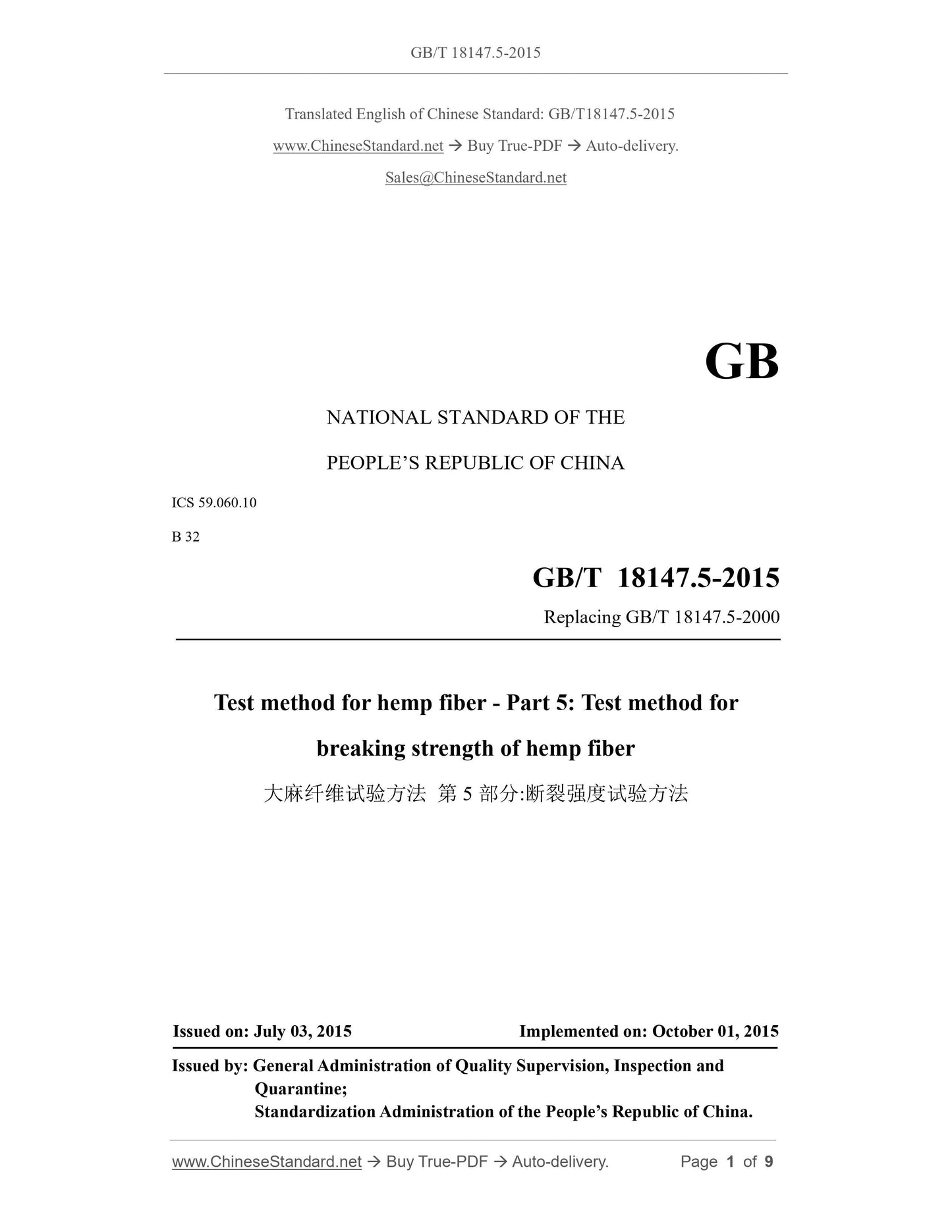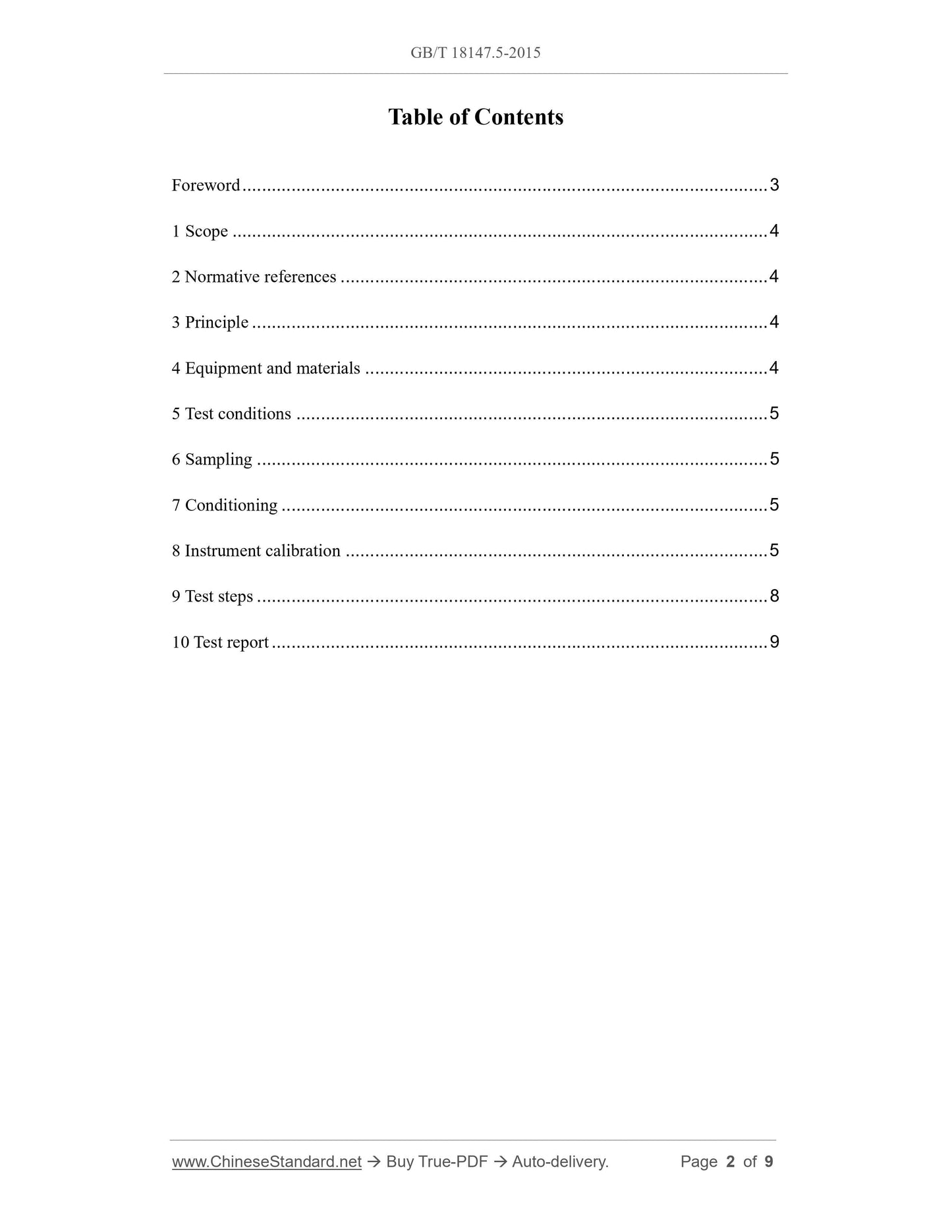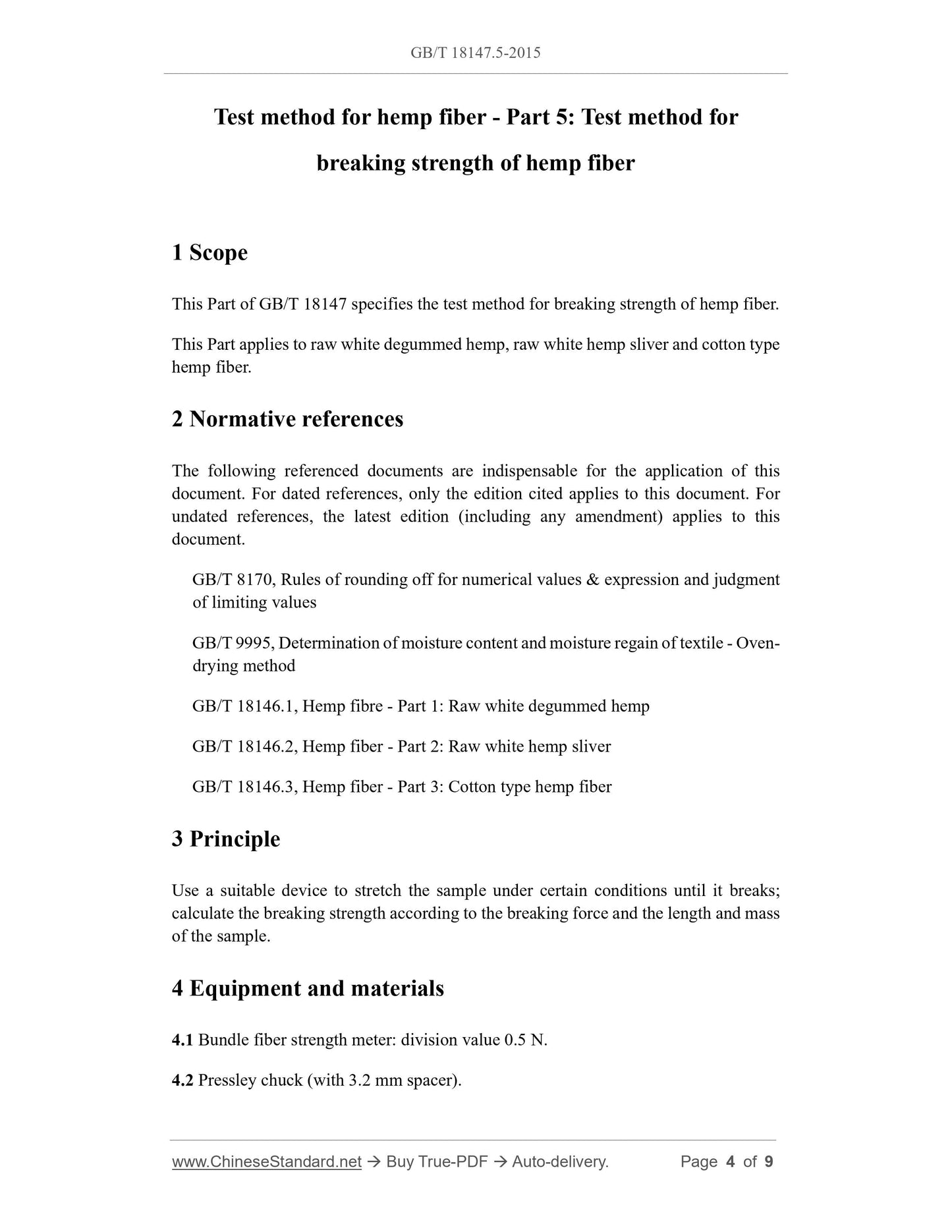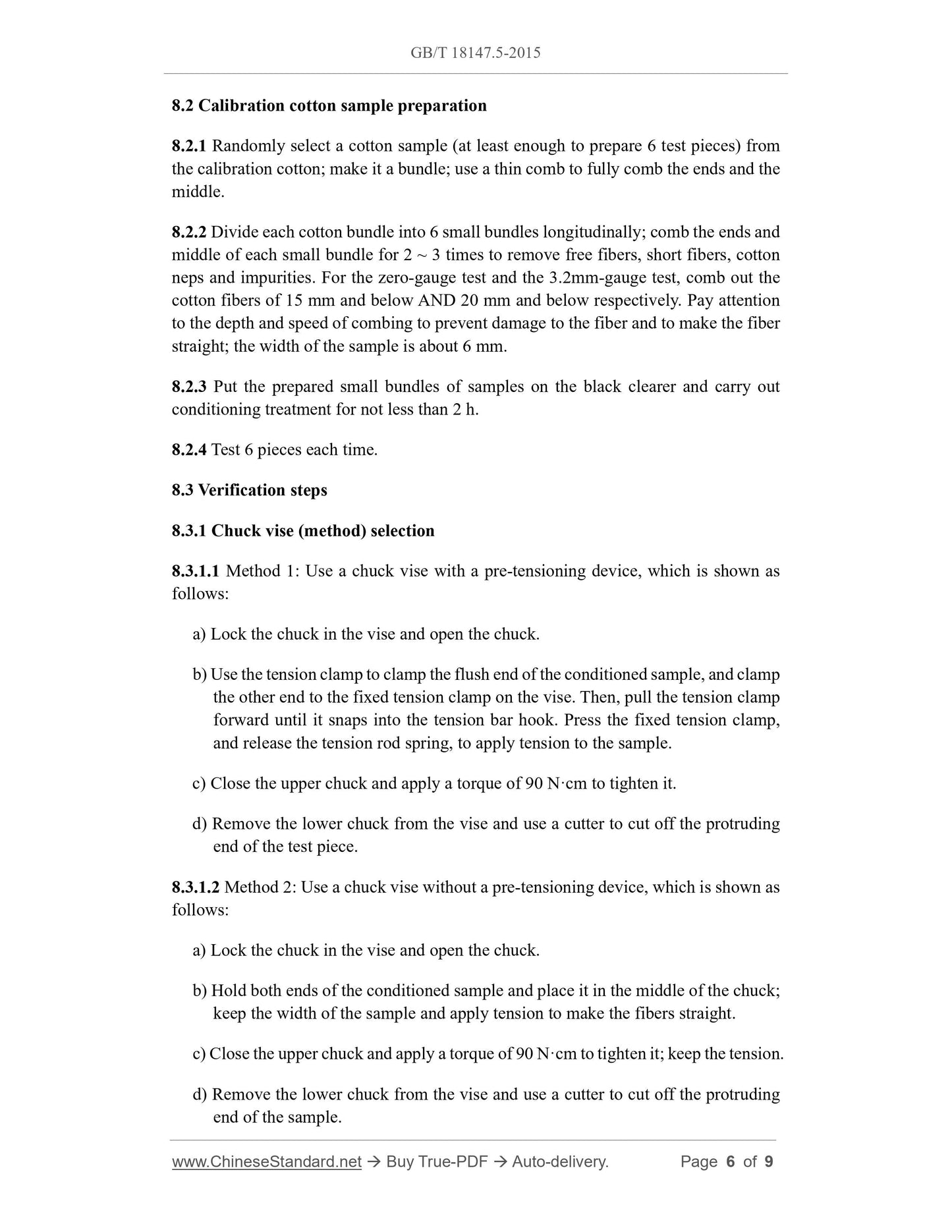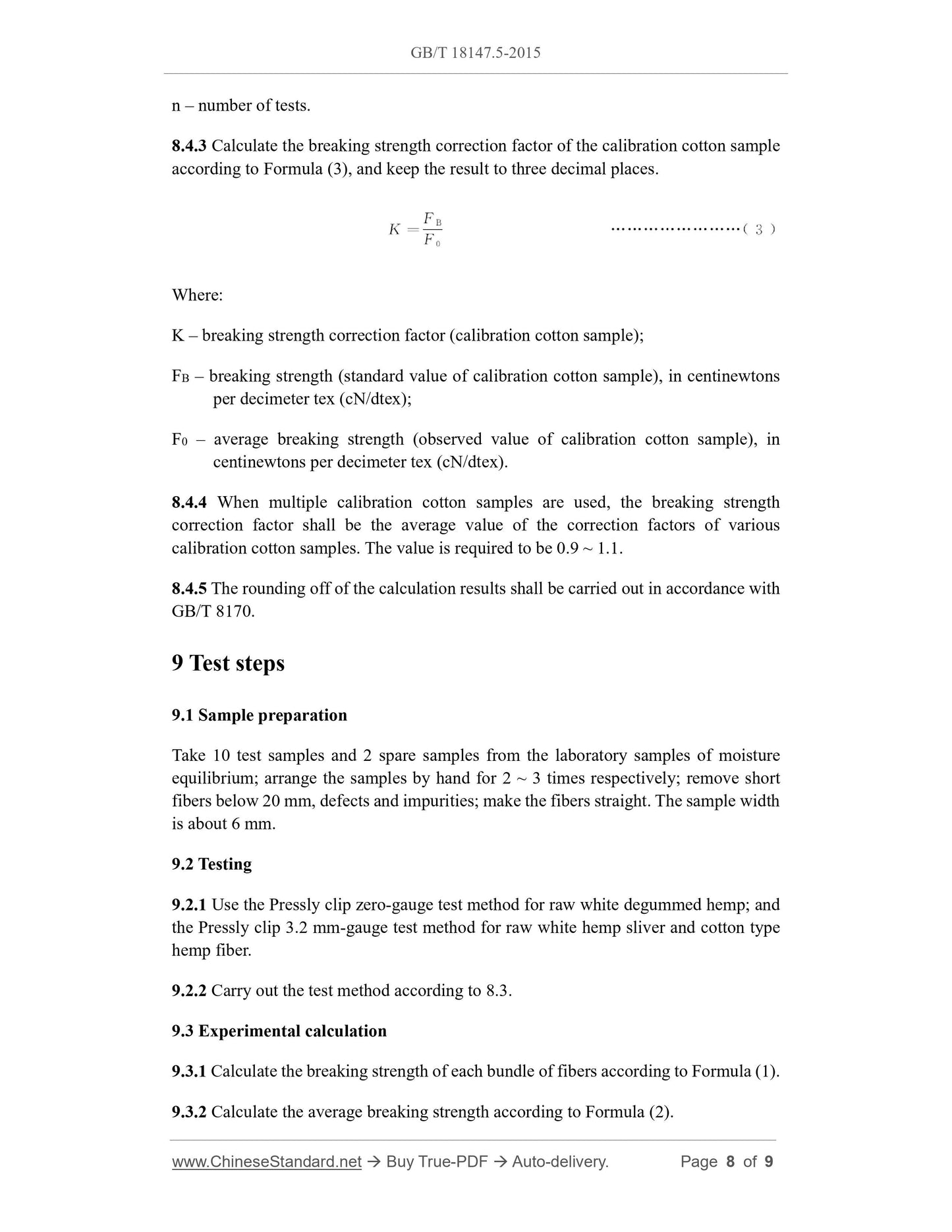1
/
of
5
www.ChineseStandard.us -- Field Test Asia Pte. Ltd.
GB/T 18147.5-2015 English PDF (GB/T18147.5-2015)
GB/T 18147.5-2015 English PDF (GB/T18147.5-2015)
Regular price
$100.00
Regular price
Sale price
$100.00
Unit price
/
per
Shipping calculated at checkout.
Couldn't load pickup availability
GB/T 18147.5-2015: Test method for hemp fiber -- Part 5: Test method for breaking strength of hemp fiber
Delivery: 9 seconds. Download (and Email) true-PDF + Invoice.Get Quotation: Click GB/T 18147.5-2015 (Self-service in 1-minute)
Newer / historical versions: GB/T 18147.5-2015
Preview True-PDF
Scope
This Part of GB/T 18147 specifies the test method for breaking strength of hemp fiber.This Part applies to raw white degummed hemp, raw white hemp sliver and cotton type
hemp fiber.
Basic Data
| Standard ID | GB/T 18147.5-2015 (GB/T18147.5-2015) |
| Description (Translated English) | Test method for hemp fiber -- Part 5: Test method for breaking strength of hemp fiber |
| Sector / Industry | National Standard (Recommended) |
| Classification of Chinese Standard | B32 |
| Classification of International Standard | 59.060.10 |
| Word Count Estimation | 7,790 |
| Date of Issue | 2015-07-03 |
| Date of Implementation | 2015-10-01 |
| Older Standard (superseded by this standard) | GB/T 18147.5-2000 |
| Quoted Standard | GB/T 8170; GB/T 9995; GB/T 18146.1; GB/T 18146.2; GB/T 18146.3 |
| Regulation (derived from) | National Standard Announcement 2015 No.22 |
| Issuing agency(ies) | General Administration of Quality Supervision, Inspection and Quarantine of the People's Republic of China, Standardization Administration of the People's Republic of China |
| Summary | This Standard specifies the test methods for hemp fiber breakage strength. This Standard applies to cannabis resin, hemp flax and hemp fiber cotton. |
Share
